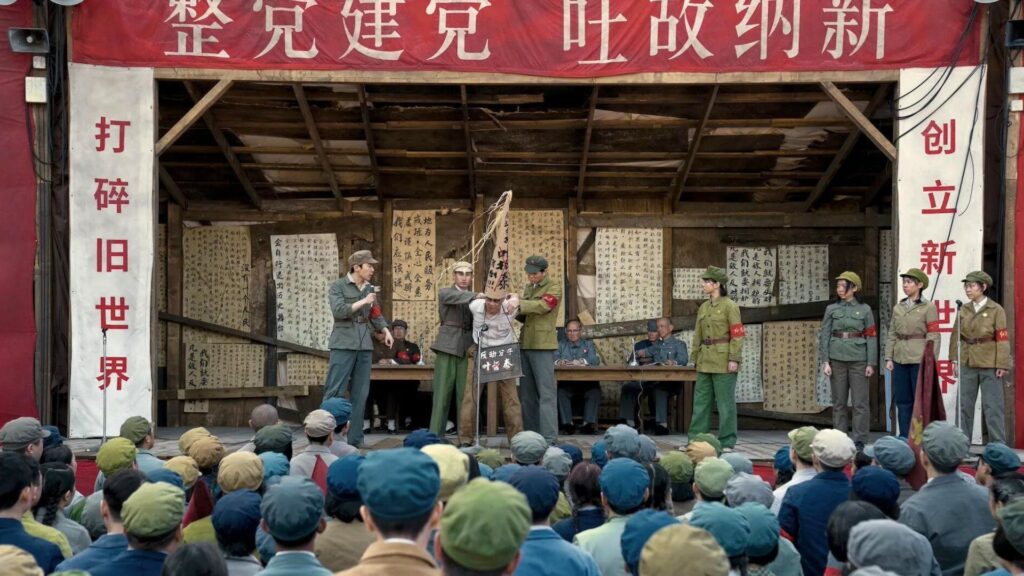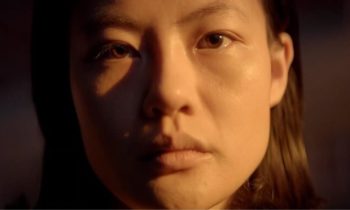The introductory scene of the series The 3-Body Problem, on Netflix, is set in the middle of the Cultural Revolution in China. Although it is also present in Liu Cixin's book, its strong political connotation was not without its problems.
The new hit on Netflix is a science fiction series: The 3-Body Problem. Developed by the ex-showrunners of Game Of Thrones, she adapts the work of the same name by Liu Cixin. This literary saga is one of the rare ones of its kind to come to us from China: science fiction has not always had a good place in the country, with periods of censorship of this very political kind. It is quite recent that it has been tolerated, even valued as a tool for cultural dissemination.
Advertisement
Literature as a whole remains under control in China, and any type of content is not possible. The representation of historical events, in particular, is particularly scrutinized (which is why time travel in fiction remains a delicate subject, For example). The Netflix series, however, begins with a scene set in the middle of the Cultural Revolution in China. We see the father of one of the characters being publicly executed by the Communist Party. Then a whole section of the story, set in this period, follows the journey of his daughter — Ye Wenjie. This execution is the reason why she loses faith in humanity, and it is what will trigger her gesture, the famous plot twist which will endanger the destiny of the entire planet.
This scene has a particularly political role, in that it criticizes the violence of the Cultural Revolution. But it is not necessarily an addition from the showrunners of Game Of Thrones. It also exists in Liu Cixin's book. His place in this one, on the other hand, was not without turmoil. If you read the book in French, it is located at the beginning. Originally, this is not the case.
The execution scene was “buried” in the book
It is to the American SF/fantasy author Ken Liu that we owe the first arrival of the 3 Body Problem In Occident. He translated Liu Cixin's work from Chinese to English. But, very quickly, he encountered a problem: structurally, the temporal narration seemed strange. This decisive scene, that of the execution, came very late in the work. Ken Liu contacted Liu Cixin and made this unorthodox request: transfer the scene to the beginning of the work, so that it would make more sense.
“This is what I originally wanted!” »
Liu Cixin
Nearby New York TimesKen Liu remembers Liu Cixin’s reaction: “ This is what I originally wanted! » replied the author of 3 Body Problem. And for good reason, Liu Cixin was 3 years old during the Cultural Revolution led by Mao Zedong. His family suffered the brutality. It was important to him that this be anchored in his book: this scene had to open The 3-Body Problem.
Advertisement

The editor was not very enthusiastic about this introduction. The scenes were too politically charged », which made the publishing house fear outright censorship. She then makes the decision, with the author, to bury the introduction much further into the book. As a sort of compromise: it is not deleted, but more submerged in the thick story, which attracts much less attention. This is a partial self-censorship, very significant on the functioning of censorship in China – we remember that, at the beginning of 2024, a prestigious SF prize self-censored for fear of offending the party.
The Cultural Revolution is 'essential to the plot'
What we learn in the New York Times is that Liu Cixin never really appreciated this choice, in that it undermined the spirit of the work. “ The Cultural Revolution appears because it is essential to the plot. The protagonist needs to completely despair of humanity », Explained the author to the New York Times journalist, in a remote interview.
We therefore understand much better why he accepted, with enthusiasm, that the scene serve as an introduction in the edition translated and published in the United States. Internationally, this choice will be retained, and you will therefore also find it at the beginning of your French edition translated by Gwennaël Gaffric.





